What Are Action Verbs?
Action verbs describe actions that are physically or mentally performed by a person or thing. They convey what someone or something is doing. These verbs are dynamic and typically refer to activities, processes, or bodily movements. learn more about the types of verbs to understand how different verb categories function in sentences.
Examples of Action Verbs:
| Physical Actions | Mental Actions |
|---|---|
| run | think |
| jump | imagine |
| swim | believe |
| write | consider |
| eat | remember |
Key Points to Remember:
- Action verbs can often be visualized or demonstrated. For example, run or write can be physically performed.
- They show an activity that the subject is engaged in.
Example Sentences:
- She ran to the store.
- I am thinking about my next vacation.
What Are Non-Action Verbs?
Non-action verbs, also known as stative verbs, refer to conditions or states of being. These verbs express emotions, relationships, senses, or existence rather than actions. Non-action verbs describe something that exists or is rather than something being done.
Examples of Non-Action Verbs:
| State of Being | Emotions | Senses |
|---|---|---|
| be | love | hear |
| belong | hate | smell |
| own | need | taste |
| seem | prefer | see |
| know | want | feel |
Key Points to Remember:
- Non-action verbs cannot be visualized because they refer to abstract states, thoughts, or relationships.
- They are usually not used in the progressive (continuous) form.
Example Sentences:
- I own a new laptop.
- She feels happy today.
Differences Between Action and Non-Action Verbs
While both types of verbs are essential in sentence construction, their usage is different. Let’s compare them in more detail:
| Aspect | Action Verbs | Non-Action Verbs |
|---|---|---|
| Definition | Verbs that show physical or mental actions | Verbs that show a state, emotion, or condition |
| Can be visualized? | Yes | No |
| Used in continuous form? | Yes (e.g., She is running) | No (e.g., I know vs. I am knowing) |
| Examples | run, eat, jump, think | know, love, belong, seem |
Common Mistakes When Using Action and Non-Action Verbs
Many beginners struggle with using these two types of verbs correctly, especially when it comes to progressive tenses (the -ing form).
Mistake 1: Using Non-Action Verbs in Continuous Forms
Non-action verbs are typically not used in continuous forms because they refer to states rather than actions.
- Incorrect: I am knowing the answer.
- Correct: I know the answer.
Mistake 2: Confusing Action Verbs with Non-Action Verbs
Sometimes, students confuse certain verbs like think or have, which can act as both action and non-action verbs depending on the context.
- Think (Action): I am thinking about dinner. (Refers to a process of thinking.)
- Think (Non-Action): I think you’re right. (Refers to a state of opinion.)
How to Identify Action and Non-Action Verbs
If you’re unsure whether a verb is an action or non-action verb, ask yourself:
- Can this verb show something happening?
- If yes, it’s likely an action verb. For example, run, dance, talk.
- Can I use this verb in a continuous form?
- If not, it’s probably a non-action verb. For example, belong, know, seem.
Mixed Verbs: Verbs That Can Be Both Action and Non-Action
Some verbs in English can function as both action and non-action verbs depending on the context. These are known as mixed verbs. Let’s take a look at some examples:
| Verb | Action Use | Non-Action Use |
|---|---|---|
| think | I am thinking about my homework. (Action) | I think he’s right. (Non-action) |
| have | I’m having lunch. (Action) | I have a car. (Non-action) |
| see | I’m seeing the doctor today. (Action) | I see the problem. (Non-action) |

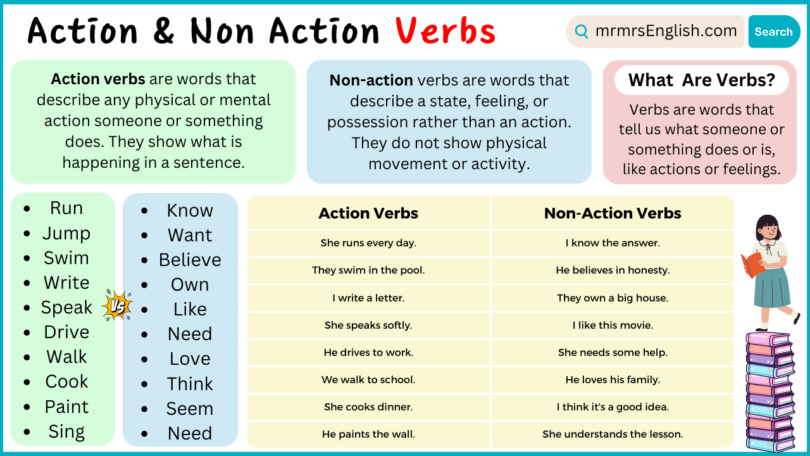
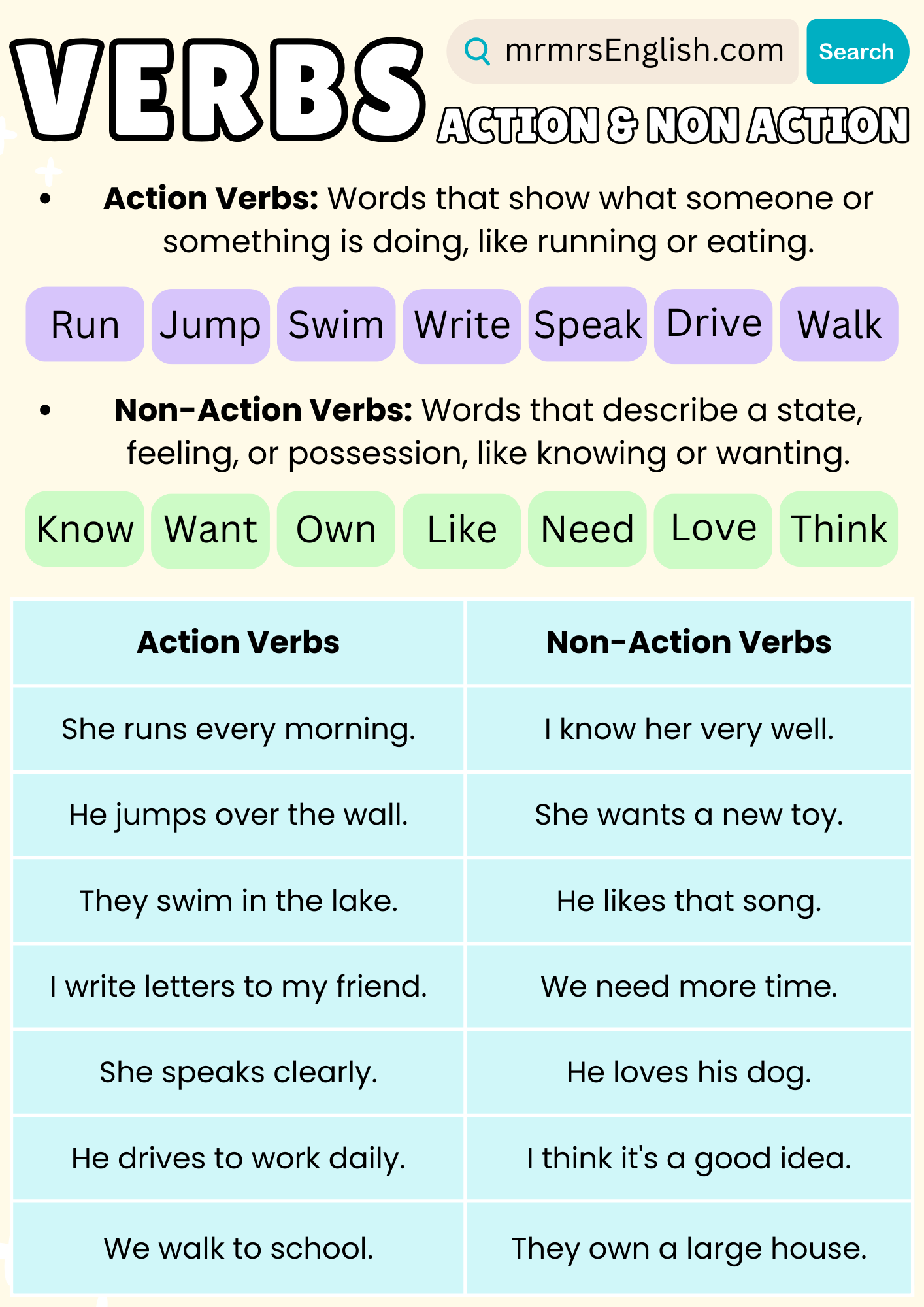
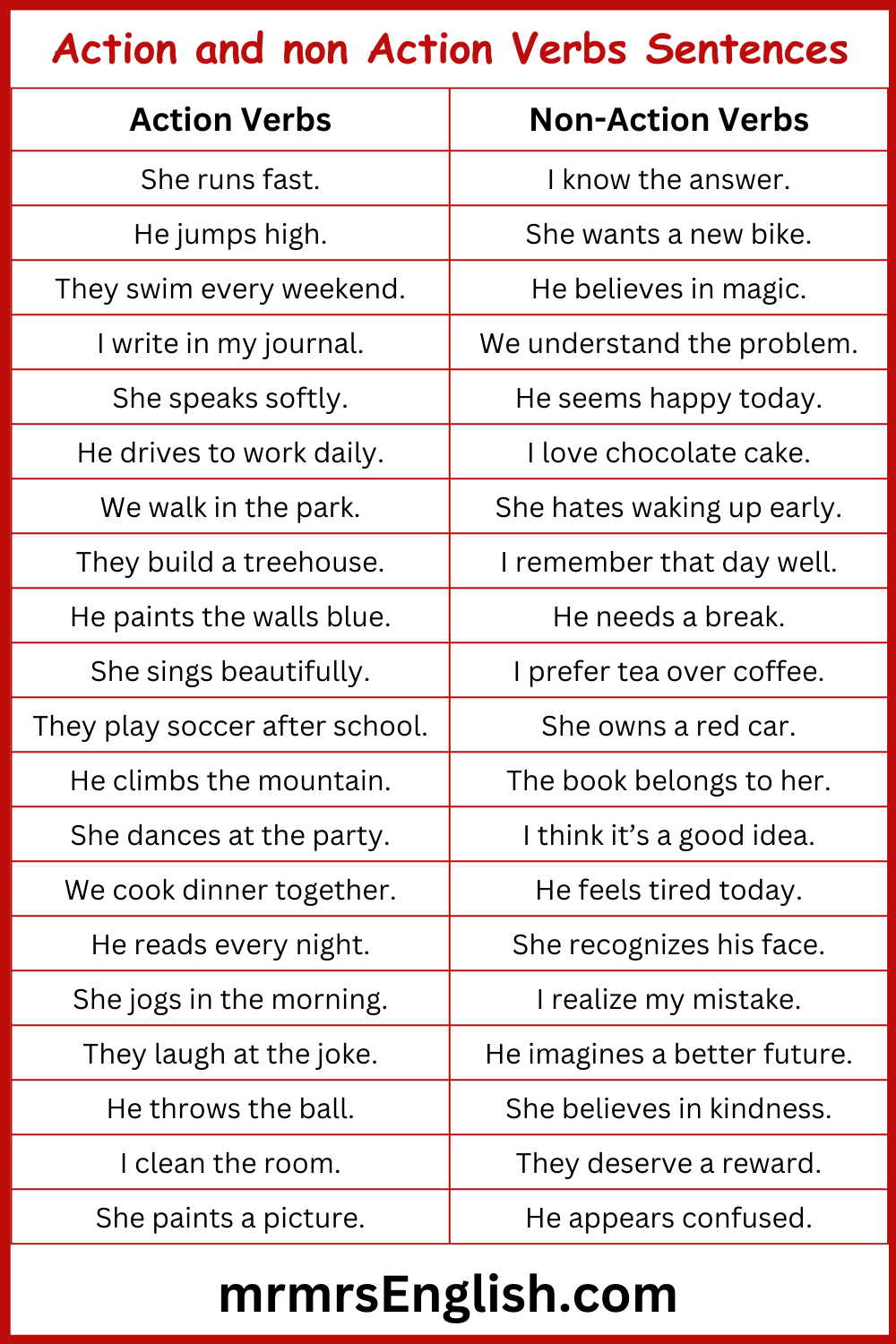


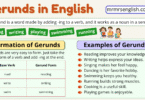
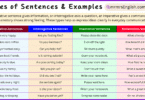
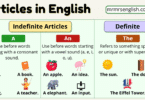
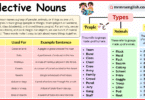
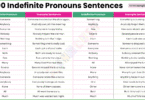
Leave a Comment